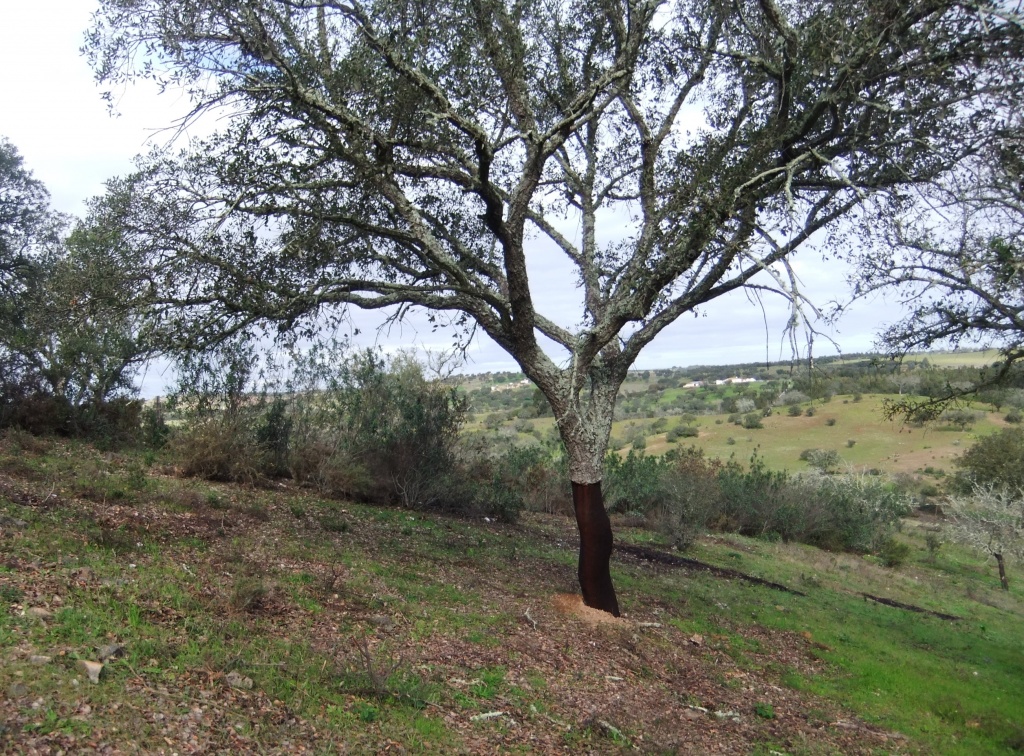
Portugals National Tree
Quercus suber was elected in 2012 the national tree of Portugal.
It is slow-growing and long-lived, some individuals surviving to 250 years of age. Cork oak landscapes are mosaics of forest habitats, comprising cork, holm and deciduous oak species, stone and maritime pines, wild olive trees, maquis (a type of Mediterranean shrubland), and pasture.
Native largely to Mediterranean countries, Quercus suber is cultivated commercially for its cork in France, Spain, Portugal, Italy, Morocco, Tunisia and Algeria. Once the tree is about 25 years old, the thick, spongy grey bark is ready for removal and is cut back with an axe to reveal the red inner bark below. This process does no harm to the tree and can be repeated every nine years for the rest of its life as the tree renews this outer layer of skin.
Cork oak bark has been harvested for thousands of years and with good reason. The Romans discovered that it would float and used it for buoys in fishing nets as well as for making sandals. Being light and impervious to liquid has made cork one the wonders of the natural world, and one that today is a billion pound industry.
Portugal is the leading producer of cork in the world, supplying 50% of the world’s total and in this country it is illegal to cut down a tree with the exception of those in forest management where old and unproductive trees are no longer needed.
Uses for cork are varied, from floor panelling to bulletin boards and even in rocket technology, but it is probably most famous as a bottle cork. For hundreds of years it has been the material of choice for wine bottle stoppers, despite the emergence of man-made alternatives in recent years, which are not biodegradable.



You must be logged in to post a comment.